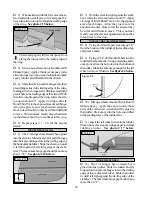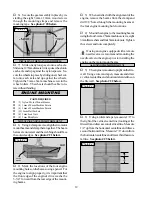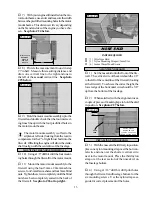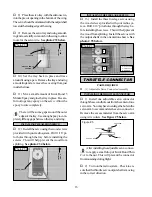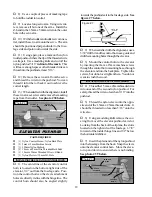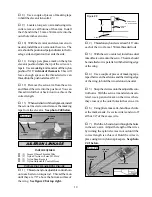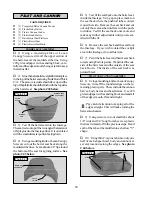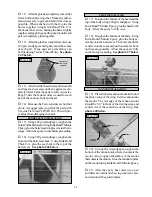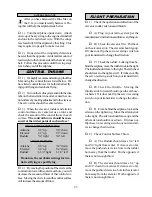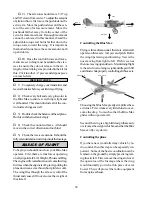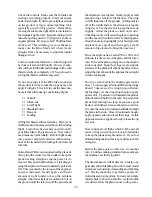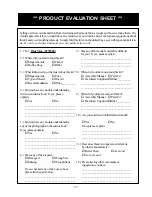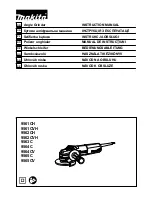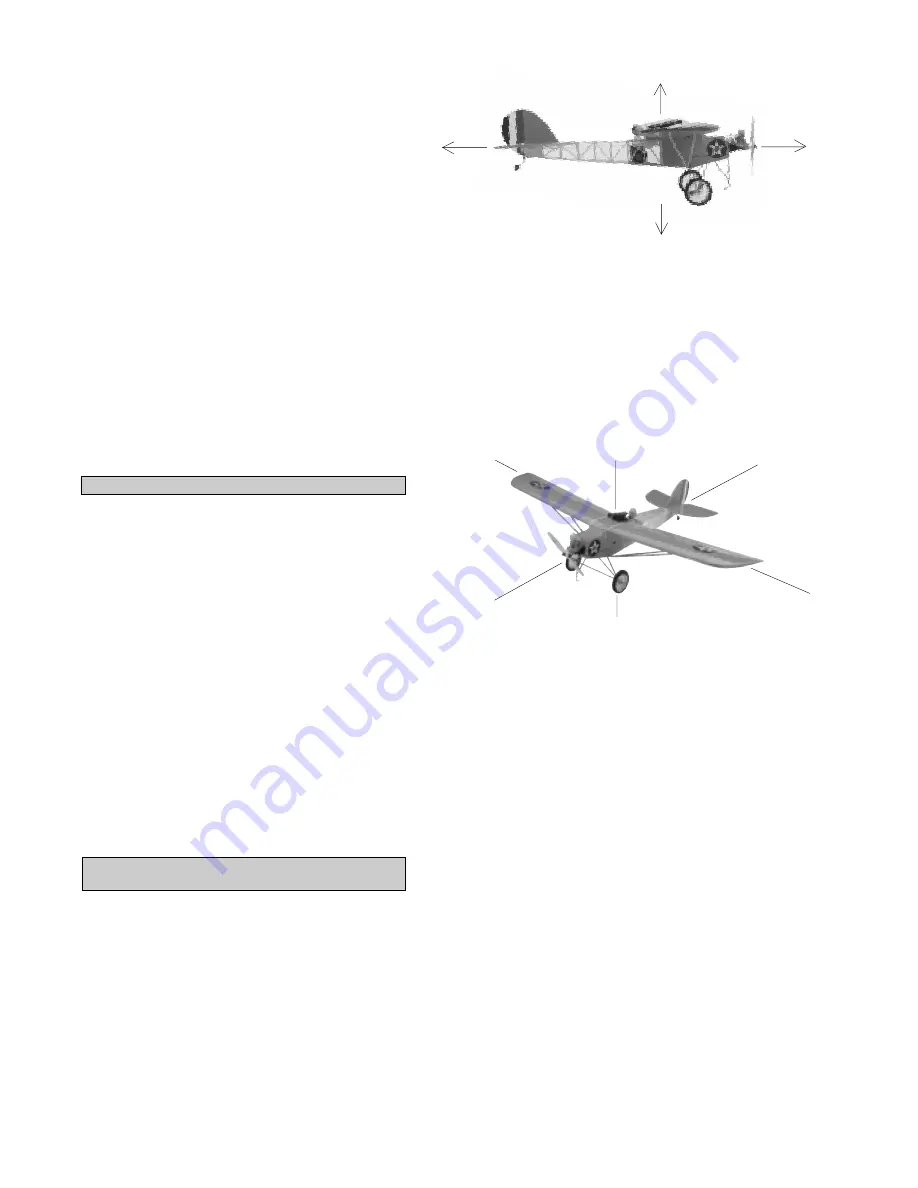
24
o
C) The ailerons should move 3/8” up
and 3/8” down from center. To adjust the amount
of aileron throw, first move the pushrods on the
servo arm. Move the pushrods toward the cen-
ter of the servo for less movement. Move the
pushrods farther away from the center of the
servo for more movement. If enough movement
cannot be achieved in this manner, thread the
adjustable torque rod horns farther down the
torque rods, toward the wing. It is important
that both ailerons move the same amount, both
up and down.
o
D) Once the control throws and move-
ments are set, tubing must be added to the clev-
ises to ensure they do not release in the air. A
length of clear tubing was provided in the kit for
this. Cut it into the 1/4” pieces and slip one piece
over each clevis.
o
1) Completely charge your transmitter and
receiver batteries before your first day of flying.
o
2) Check every bolt and every glue joint in
the Blue Max to ensure everything is tight and
well bonded. This should include all of the con-
trol surface hinges as well.
o
3) Double check the balance of the airplane.
Do this with the fuel tank empty.
o
4) Check the control surfaces. All should
move in the correct direction and not bind.
o
5) Check the receiver antenna. It should be
fully extended and not coiled up inside the fuselage.
PREFLIGHT CHECK
BASICS OF FLIGHT
To begin you should know how your Blue Max
operates. First, there are four forces operating
on a flying aircraft; Lift, Weight, Thrust and Drag.
The engine will create thrust to overcome the drag.
In times when the engine is off, gravity pulling the
plane down can act as thrust (how gliders work).
The wing flies through the air as a result of the
thrust and causes lift to overcome the weight of
the aircraft.
Controlling the Blue Max
Flying is three dimensional, therefore, all aircraft
operate on three axis: roll, yaw and pitch. Roll is
the wing tips raising and lowering. Yaw is the
nose moving from right to left. Pitch is seen as
the nose moving up and down. Maintaining flight
is the act of overcoming weight and drag with lift
and thrust while properly controlling all three axis.
Choosing the Blue Max greatly simplifies these
activities. First, it takes very little thrust to over-
come the drag. So much so that the Blue Max
glides with no power at all.
Second, the wing is a high lift design that easily
overcomes the weight which means that the Blue
Max can fly very slowly.
Controlling the plane
If you have never controlled any vehicle by ra-
dio control, then this step can be especially im-
portant. Some of the basic coordination can be
learned on the ground by simply practicing taxi-
ing the aircraft. First, remove the wing and cover
the open area of the fuselage where the wing
would normally go with a thin piece of card-
board. This will protect the radio equipment
from engine exhaust.
ROLL
AXIS
PITCH AXIS
YAW AXIS
LIFT
DRAG
THRUST
WEIGHT

